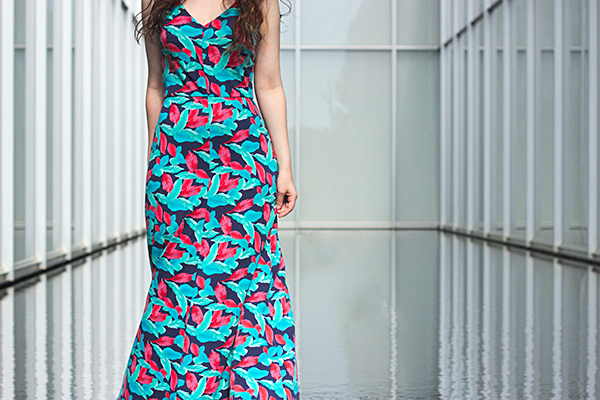
I know I mentioned this already: I loooove wearing maxi skirts and dresses in the summer! I think they create a very tall and feminine silhouette, and they protect my legs from the sun whithout clinging to them. I wear my Fumeterre skirts a lot (seen here and here), but the one I’ve worn the most these last three summers is definitely this one: a McCall’s M7121 dress in tropical jersey knit!
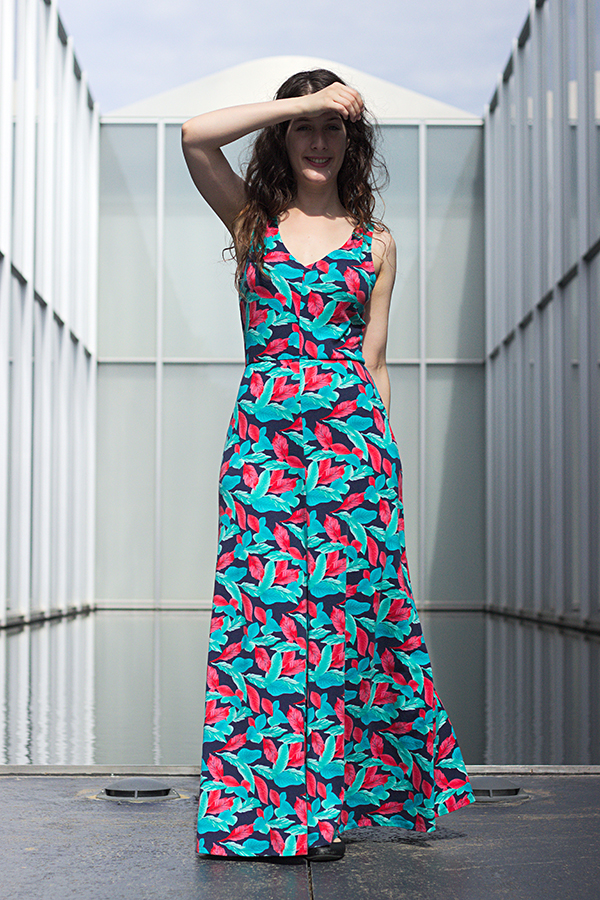
It’s been a while since I had last shown a Big 4 pattern here. The Big 4, for those of you who might not know that, are the four main US brands of sewing patterns, which now all belong to the same company: Simplicity, Butterick, Vogue and McCall’s. And that’s not all: Burda and New Look also belong to Simplicity! A decade ago, these brands represented more than 99% of the sales of sewing patterns in the US [source]. A monopoly that has since evolved with the boom of indie sewing patterns.
In Europe, Big 4 patterns are quite expensive, up to $25 for the fancier Vogue ones. So when I moved to the US and realized that I could take advantage of the JoAnn sales to grab some for $1 a piece, you can imagine how much my stash exploded! I now own over 80 Big 4 paper patterns, most of them being reproduction of vintage dresses… And yet I haven’t even sew 10% of that…

The problem with Big 4 patterns, aside from doubtful choices of fabrics and styling, is that the construction techniques they use are also pretty outdated, especially when it comes to knits. Let’s take this dress for instance: McCall’s M7121/MP422. It’s a very simple knit dress, with a V neckline, a defined waist, center front and back seams and a nicely flared skirt. You kind of have to ignore the front of the pattern envelope to focus on the technical drawings on the back, because this Harlequin color-block version… Eeeeeh.
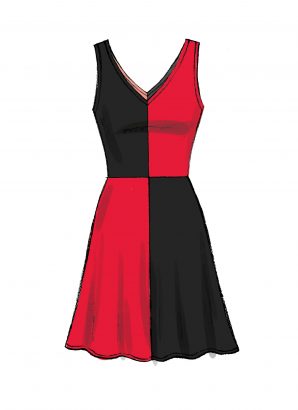
I’m not any more convinced of the longer version with the skirt slit: I’m all for a side slit, but a slit right in the middle, on a super flared knit skirt, well that’s pretty useless and neither pretty in movement nor sitting down. Still, the dress has potential, with two lovely back options: a V back or a racerback. I especially like the racerback here: it’s a nice change, and the length and flare of the skirt manage to keep it from looking too sportswear.

This is where the typical issues with Big 4 patterns appear. The seam allowances of 5/8” are not ideal for sewing the dress on a serger, but that’s not a problem as long as one is paying attention. The issue is that the neckline and armholes are finished with a single hem, also 5/8”. I guess it kind of works for the V-shaped neckline, but for the deep curves of the racer back that’s a great big NOPE!
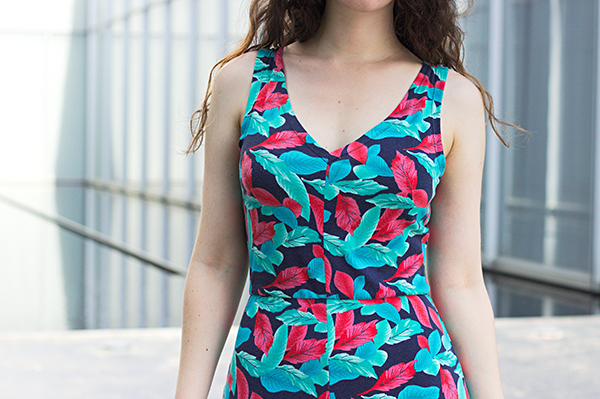
I managed to get a decent result by stretching the edges of the piece (like you would shape a bias binding), and the finished dress just gapes a little bit at the front of the armholes. All the dresses I’ve seen online made from this pattern have some kind of gaping, more or less pronounced, at the armholes and/or neckline. I feel like using bands, like on the Zéphyr dress, would have made for a much cleaner finish!

I also had to adjust for the extra ease of Big 4 patterns by going down two sizes from the measurements chart (size 8 instead of 12 for a 88 cm bust). So, I know, I’m complaining as usual, but there are still things I like about this pattern, such as the elastic inserted in a casing in the waist seam allowance, which helps support the weight of the skirt. If I were to ignore the instructions and put the dress together my way, it could become a good tried-and-true pattern. I’d just need to move a little faster than I did on this one: started at the start of the summer 2016, finished at the end of the summer 2017, photographed in June 2018 and here we are, finally on the blog in July 2019. Sounds like I might be slacking off a little bit!
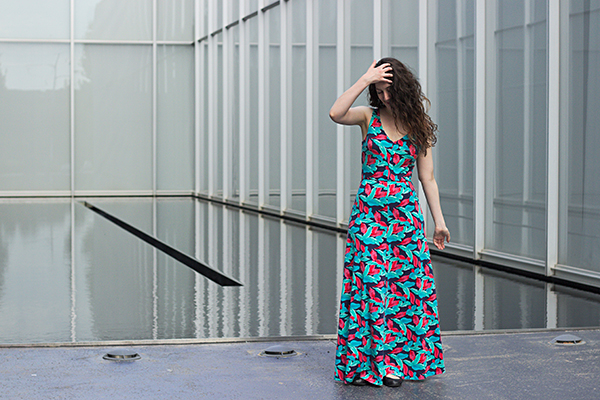
Tropikitsch Maxi Dress
McCall’s M7121/MP422
Size 8
Cotton-elastane jersey – JoAnn Fabrics (rayon challis in the same print available here)

You are right about the Big 4 and the changes they need to make. But they are such good value for the variety of choices and the multiple views available with most of the patterns. Once you have more experience, it’s easy to know what to do (your own methods) without reading the instructions. I mainly read them when there are many steps in an unfamiliar or complicated garment type.
You make a very good point! I think I need to revisit my collection now that I’m experienced enough to put together a garment with my preferred construction methods without needed the instructions 🙂
Good job spotting a diamond in the rough—that colored line drawing looks better suited to a Halloween costume than an everyday dress! The racerback is really lovely. I definitely thought you *did* use bands for finishing until you said otherwise; your topstitching is so tidy! Do you think you’ll make the version with the back v-neck as well?
Thank you!! I actually had forgotten about the second version of the pattern until I wrote the blog post, but now I’m thinking I might give the V-back version a go! I don’t think I’d use a band to finish it if there’s a V in the front and back though, I’d be afraid that it’d make the front and back ride up. I would just use them for the armholes.